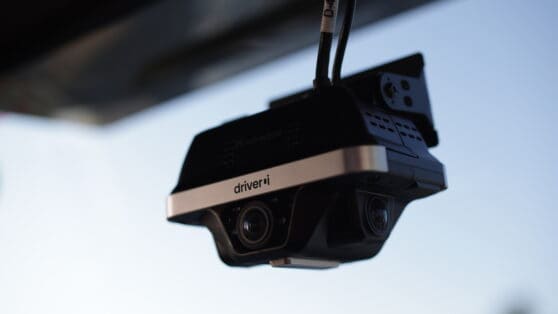Alert, responsible, focused, and aware…all qualities of driving behavior that make up a safe driver, just to name a few.
These positive behaviors are crucial to a successful fleet safety program and don’t necessarily get the attention they deserve in driver feedback. Typically, review sessions focus on pointing the finger at the driver- what they did wrong and the risk associated.
Typically, the conversation is lopsided – only focusing on: “don’t do this when driving!”
What’s wrong with this picture? It creates friction. It results in unhappy and nonproactive drivers. Drivers get worn down from an overabundance of punity criticism; feedback fatigue. Which leads to low morale, poor performance and higher turnover rates. All things you don’t want.
So, instead of leading with the negative, why don’t we lead with the positive? Or even better, why don’t we stop communicating what not to do, and start coaching what to do. Positive communication is proven to increase morale, encourage good behavior, and provide a sense of purpose.
We need to flip the script of how we communicate in our industry.
In this article, I will discuss the importance of positive communication and how to apply it to your fleet safety program.
Communicating What To Do
Every industry has its own lingo and ways of communicating. And the nature of fleet management and driver relationships historically has been pointing the finger at drivers for their risky driving behavior.
It’s understandable. Fleet managers need to ensure driving compliance, vehicle maintenance, and overall safety standards are met.
And because drivers are human, they make mistakes. When it’s time for a quarterly review or feedback, these mistakes are highlighted and put on the “what not to do” list.
But there’s a new, more proactive way of communicating areas that need improvement.
Instead of making a “what not to do” list, what if we flipped the conversation to communicate what to do? A simple (positive) shift of the verbiage (and mindset).
For example, you have a driver who is consistently following too close. Instead of saying “stop following too close”, show drivers examples of a safe following distance and show them how to maintain this safe driving behavior. You can even throw in a reward and say, “ Consistent, safe following distance like this will earn you more bonuses.”
Doesn’t that sound a lot more approachable? And also actionable? Now, the driver understands what to do and can focus on that. Success!
Setting clear expectations of what the driver should be doing, will make them focus more on the task at hand. It’s more likely for them to act on and positively switch their behavior when they are taught what they should be doing.
It’s how the human brain works.
Transform Fleet Safety Programs
Like I’ve said, communicating “the do’s” and recognizing positive, proactive driving behavior is crucial in any fleet safety program. And if you aren’t already counting this as an important element, you are behind.
Coaching drivers in a positive manner simply works better. Take Steve McCormick, VP of Finance from JL Rockroth who said, “What we like with Netradyne is being able to tell the drivers ‘You are doing a good job. For those of you who are not doing as good of a job, here are the things you can do to get better and improve.”
And it’s not just JL Rockroth who’s seen results. Many other organizations have seen dramatic improvements in driver behavior when enacting positive, proactive feedback.
Communicating the “do’s” reaps benefits like:
- Improved safety culture
- Improved driver behavior
- Increased driver retention
- Lowered distracted driving
- Improved compliance
- Increased profits or decreased claims
Let’s take a look at how to flip the script in real life scenarios.
The Do’s vs. The Don’ts
Here are some real-life scenarios of how to flip the script, when coaching drivers:
The Don’t
“You’re speeding too much, stop speeding”
The Do
“You drove 8 hours at or under the speed limit, great job. Let’s talk about how to move that number higher”
The Don’t
“You need to not follow motorists too closely”
The Do
“You’re average following distance is 3.9 seconds which is in the top 10% of the company. Do you want to learn more about the benefits of moving that number higher?”
The Don’t
“You can’t use your phone while driving”
The Do
“The road already has too many distracted drivers, let’s work on how you might anticipate those distracted drivers”
Netradyne DriverStars
Our mission at Netradyne is really simple: to create a safer world for all drivers and change the way drivers interact with the road around them.
With this mission in mind, we developed what we call DriverStars. As part of our GreenZone driver score, DriverStars make it easy to recognize and promote drivers by identifying examples of positive driving behavior.
DriverStars are awarded to drivers in recognition of proactive safe performance and are intended to encourage drivers to consistently practice defensive, safe positive driving behavior. Driveri recognizes certain actions that mitigate unsafe driving situations, automatically rewarding a DriverStar and capturing video to show everyone how it is done! Each DriverStar earned awards points to a driver’s score, and score are an easy way for managers to gauge overall performance and safety. They also provide a clear structure for awarding bonuses. All driver scores compile to create a fleet score as well.
Put simply, recognizing this positive behavior not only results in happy employees and better drivers, but also gives fleet managers the opportunity to show drivers what to do.
Here are some examples:
Created Separation by Slowing Down
A DriverStar is awarded when a driver slows down and creates a safety buffer, after another vehicle attempts to merge into the same lane.
Moved over for vehicle on shoulder
A DriverStar is awarded when there is a vehicle on the right shoulder, and the driver creates a safety buffer by moving over into another lane to avoid a possible accident and comply with applicable laws.
Stop Sign Streak Completed
This new feature, a DriverStar streak, is awarded when a driver completes 75 full stops in a row. A custom video is played congratulating the Driver on completing 75 full stops in a row.
Final Thoughts
Remember: alert, responsible, focused, and aware, just some of the qualities that make up a safe driver. How often do you communicate the importance of what to do or give them credit where it’s due?
If you are pointing a finger, we suggest giving a thumbs up.






